When I was eight, I wrote a story about a girl named Jill, who drank so much water that she eventually burst. I imaginatively titled it Water Jill - a masterpiece, I thought, but my teacher found it hysterically funny. At the time I was baffled by her reaction. To me, it was a serious cautionary tale about the dangers of over-hydration. Looking back, my fascination with all things quirky makes perfect sense - I was completely obsessed with comics, devouring each new issue the moment it arrived at my local newsagent.
You name it, I read it… Whizzer & Chips, The Beano, Buster, The Dandy, Whoopee, Bunty, Judy, Nikki, to name a few - and my all-time favourite, Mandy. These comics transported me into a realm where imaginative storytelling and vibrant artwork brought to life an endless array of stories. To those of us growing up in the UK during the late 70s/early 80s, comics were more than just entertainment, they were a portal to other worlds, a breeding ground for creativity.
Every year around this time, I looked forward to the standalone edition of Mandy - the mighty Christmas annual. It offered a thrilling blend of action, adventure, romance and drama. Lots of drama. Serialised stories were what truly captivated me, unfolding like mini soap-operas each week, leaving me eager for the next instalment.
In fact, to this day, I vividly recall a four-parter titled: That’s Not my Gran! Where the main character, Jenny, visits her gran's grave, only to be knocked out by a branch during a storm. When she wakes up she discovers her gran is alive - but not as the sweet woman she remembers. Instead, Gran is a cruel mean-spirited person who kicks poor defenceless animals and cheats at a cake competition. Furthermore, no one else seems to notice. We find out later that fake Gran is an alien looking to invade planet Earth before she spontaneously combusts (as you do).
Inventive, subversive (having an elderly woman painted the villain), and clearly memorable. But this bizarre tale wasn’t the only one of its kind; the comic was brimming with similarly outlandish and creative stories. As a child I was in awe of the Mandy writers, although as an adult looking back, I can’t help but wonder if magic mushrooms were a regular staple on the menu in the office canteen.
Aside from your alien imposters, recurring themes included, blind girls forced to work for cruel and uncaring relatives, orphans forced to live with cruel and uncaring relatives, saving blind animals from cruel and uncaring relatives…Or, spiteful girls pretending to be disabled in order to take advantage of nice people, blind heroines adopting masked identities to secretly help nice people, girls placed under a curse or in possession of seemingly supernatural objects that negatively impact their lives and the lives of…nice people… Oh, did I mention the blind?
Revisiting the archives now, it’s clear to me why, as an anxious child, I not only worried about my parents' mortality but also developed a deep-seated fear of losing my sight - more of which in the post below.
But back to Mandy, where other corking stories included:
Angel - Victorian lady Angela Hamilton has only a year to live. After faking a drowning accident to spare her parents the grief of watching her die slowly, Angela goes to London to dedicate the time she has left to helping the poor waifs. When Angel finally succumbs to her illness, her parents, who have discovered the truth, set up a children's home in her loving memory.
Blind Belinda - Belinda Stewart is blind, but also a talented singer. Her managers are Gloria and Keith Foxton, who promise she will earn enough money to receive a cure from a famous American doctor. But in fact, the Foxtons are out to pocket any money Belinda makes.
Double Trouble - Mr. Carter was stranded on a desert island for eleven years. Upon his return, he discovers that his wife tragically died in a train crash and their infant daughter was sent to an orphanage. You might think that’s enough tragedy for one man, but no… Of the children involved in the crash, only two girls survived, but no one knows which one is his daughter. To uncover the truth, Mr. Carter takes both girls on a holiday, hoping to determine which one is his. Social services anyone?
Jenna on the Run - Jenna the gypsy girl is being trained in athletics by a blind Duchess. Yes, you read that right.
Little Miss Icicle – Joanne Blake loses three loved ones in one week. She vows to freeze her heart into ice so it will never feel pain again.
The Double Life of Dolly Brown - In Victorian times, the Grimbys blackmail Dolly Brown into a fraudulent act in a travelling fair, where she has to pretend to be a life-size doll. When Dolly is not playing the doll, the Grimbys use her as a half-starved slave. Dolly has lost her memory, so she has no idea what’s happened.
If this chilling tale were brought to life on television, it would undoubtedly require a post-watershed slot.
Eyes for Mary – Mary Tremayne is going blind, and is training her dog, Shep, to be her guide. This is unheard of in Victorian times and Mary is meeting strong opposition.
But there were light-hearted moments too, evident in stories such as;
My Bionic Budgie! - When Kim Norton's budgie, Beakie, is injured by a cat, he's repaired at a Government Research Station and given bionic parts.
Lucy's Loving Cake - Lucy Davis makes a cake from bewitching flour and whoever eats a slice from it becomes “extra loving” — at least, for a time.
Ghost Writer - In what was clearly the prototype to ChatGBT, Tina Baxter is hopeless at writing until she acquires a strange typewriter.
Swinging Sue - Sue Carter works in the publicity and advertising department of a large London store, Clarrod and Sembridge. She earns the nickname Swinging Sue. This has got HR written all over it.
Romance was a recurring theme in Mandy, and one could argue that the feminist movement largely passed it by. However, it’s important to remember that the comic was a product of its time. It wasn’t particularly diverse, but it was accurate in reflecting the societal values and expectations placed on young girls in the post-war era.
That said, even within its traditional framework, Mandy did evolve over the years, from its launch in 1967 to its closure in 1991. There were subtle changes that marked the times - including a noticeable shift away from the usual focus on chasing boyfriends. Instead, we began to see more stories featuring independent, resourceful female protagonists overcoming societal obstacles and achieving great things. There were less blind characters too.
Yes, Mandy was certainly moralistic in tone, with its long-suffering heroines (and the occasional hero) eventually achieving happiness, while villains and bullies - whether they be cruel relatives, selfish classmates, or malicious authority figures - faced the consequences. This predictable structure was part of the comic’s charm, offering young readers the comforting belief that goodness would always prevail.
It wasn’t just about the stories; it was the assurance they gave us as children that, no matter how tough things got, there was always hope. These tales championed resilience, empathy, and the courage to do what was right, even in the face of adversity.
As for me, I eventually turned my tomboy attentions to Tintin, and those formidable Gauls, Asterix & Obelix. But it was Mandy that truly inspired me to write, and Water Jill was my first real attempt to channel that creative spark. It became my small, splashy tribute to the vibrant and imaginative world of our beloved, long-lost comics.





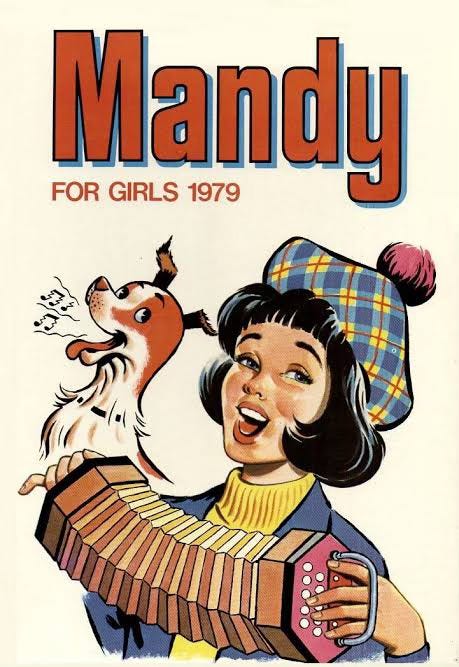
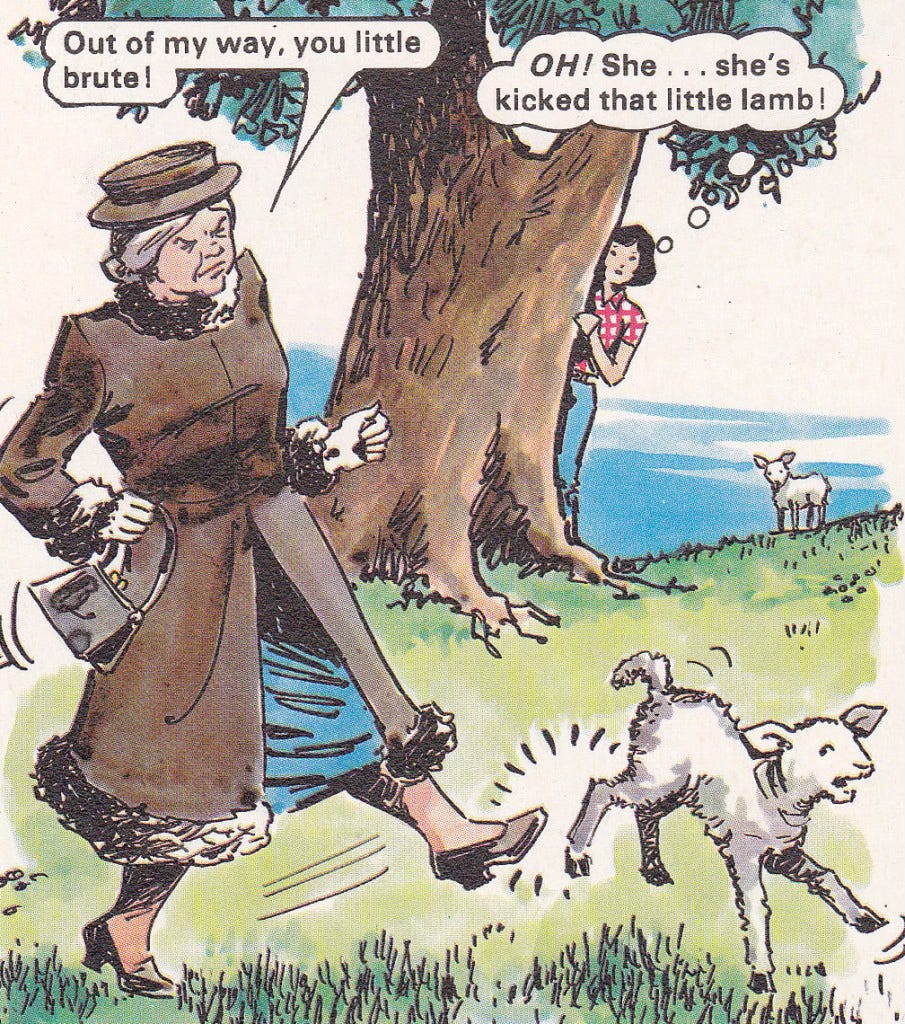


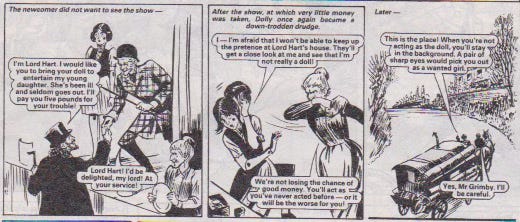
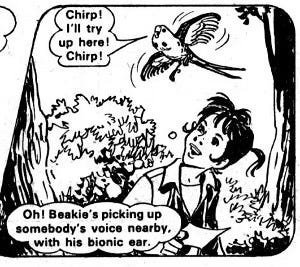

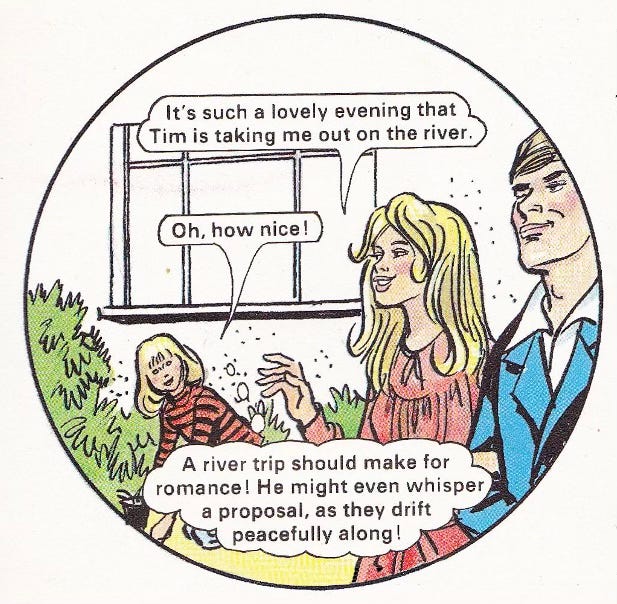
I was a Bunty fan myself, but this really takes me back, Sharon. Very funny. The plot lines! Those stories of triumph over adversity were so character-forming and inspiring, as you say, even the most ridiculous. (One from Bunty featured a girl winning a show jumping competition on a cow.)
I was also a Beano reader, via my brother.
This is so interesting,Sharon! Growing up in Australia, I never came across any of these and now I feel bereft! 😆 Some of the story lines are 😂 Smashing magic mushrooms and devising plots like this actually sounds like a pretty great job.